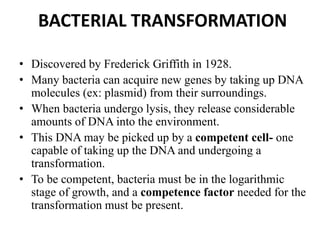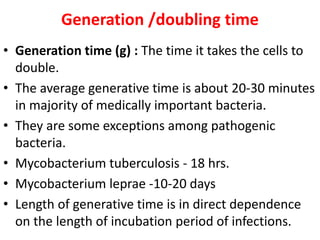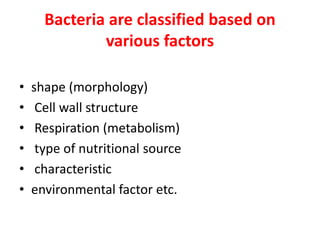Bacteria have a simple structure compared to eukaryotic cells, lacking organelles. Their small size allows rapid growth and inhabitation of diverse environments. Bacterial cells contain a cytoplasm surrounded by a cell membrane and cell wall. The cytoplasm holds the circular chromosome, ribosomes for protein production, and storage structures. Some bacteria have flagella for mobility or pili for attachment. Gram-positive bacteria have a thick peptidoglycan cell wall, while Gram-negatives have a thin wall and an outer membrane. This membrane structure contributes to differences in antibiotic susceptibility between Gram-positive and Gram-negative bacteria.
























































































































































